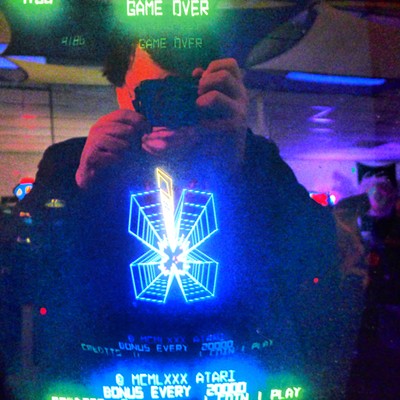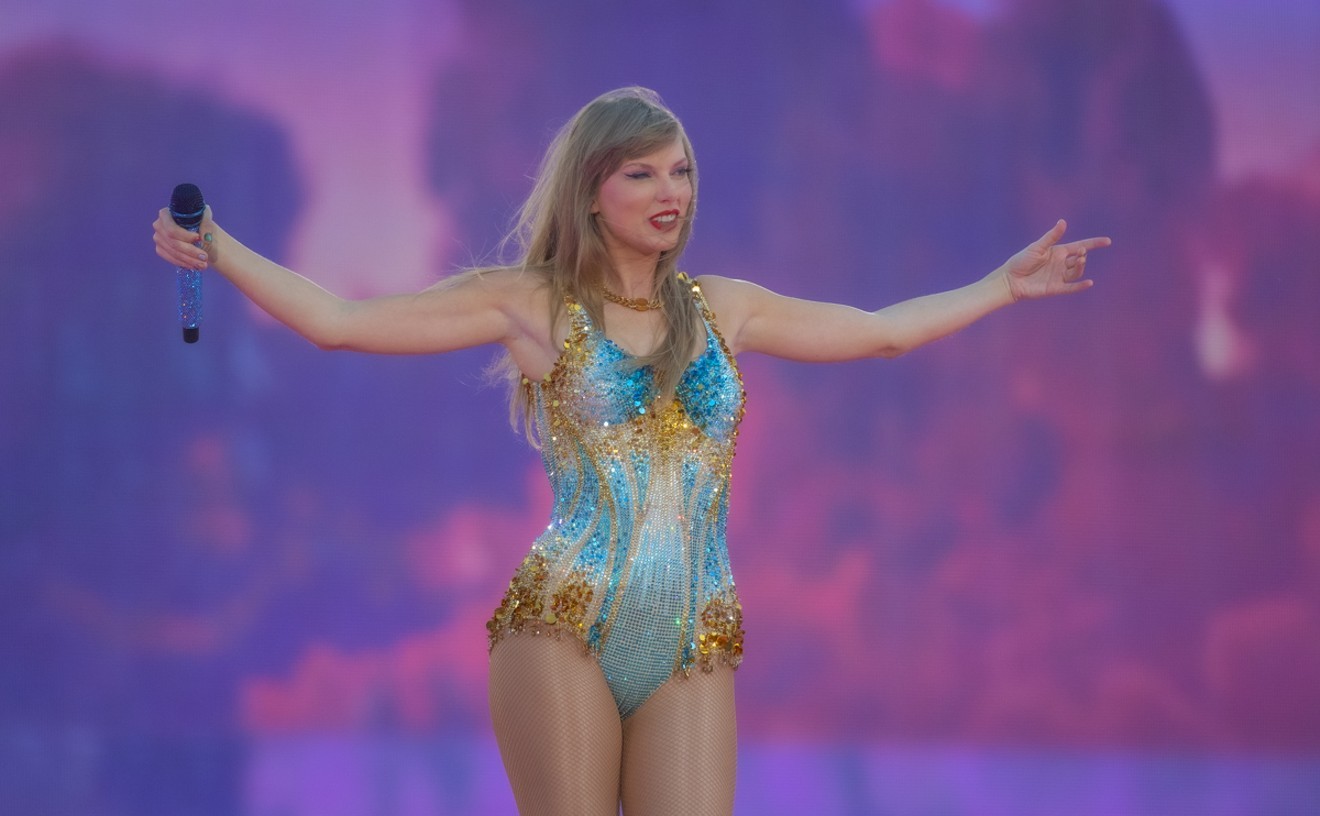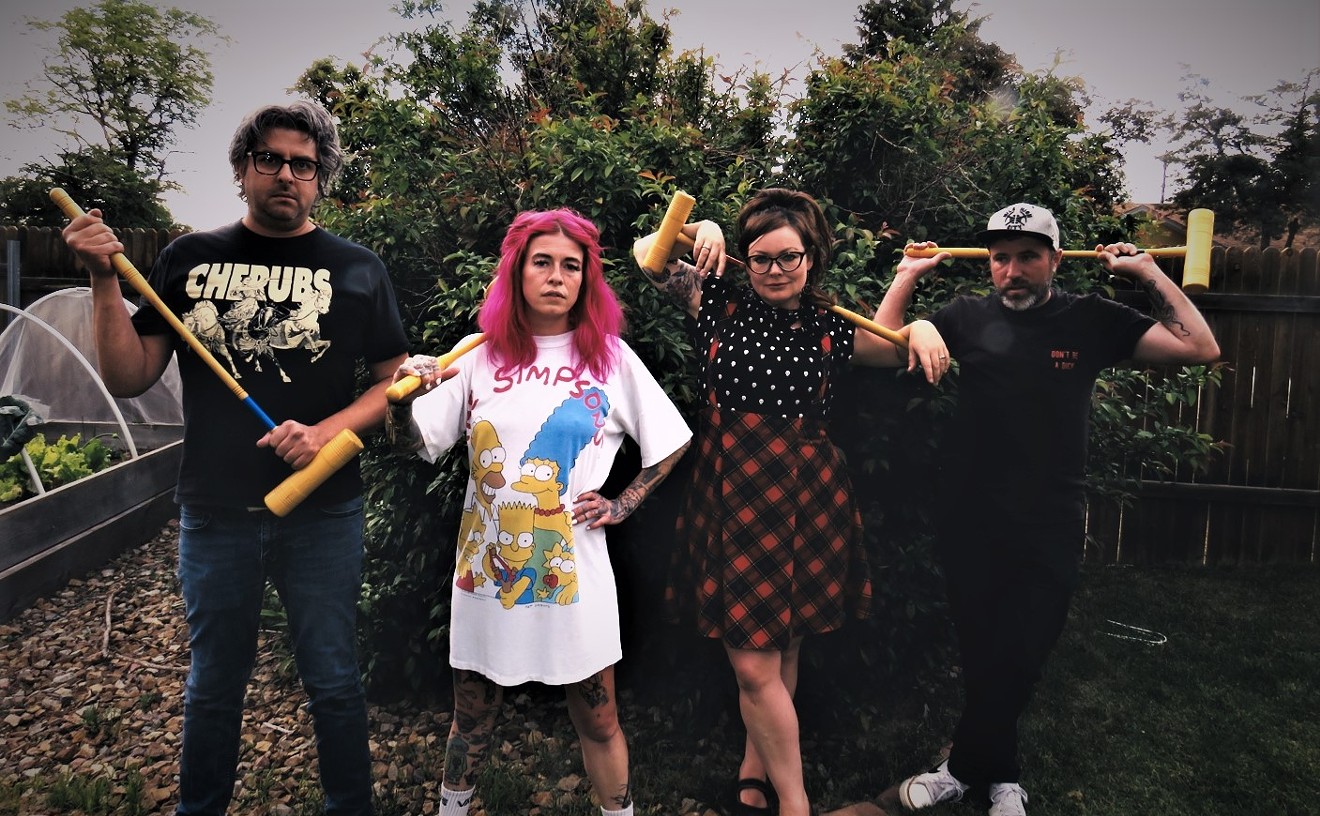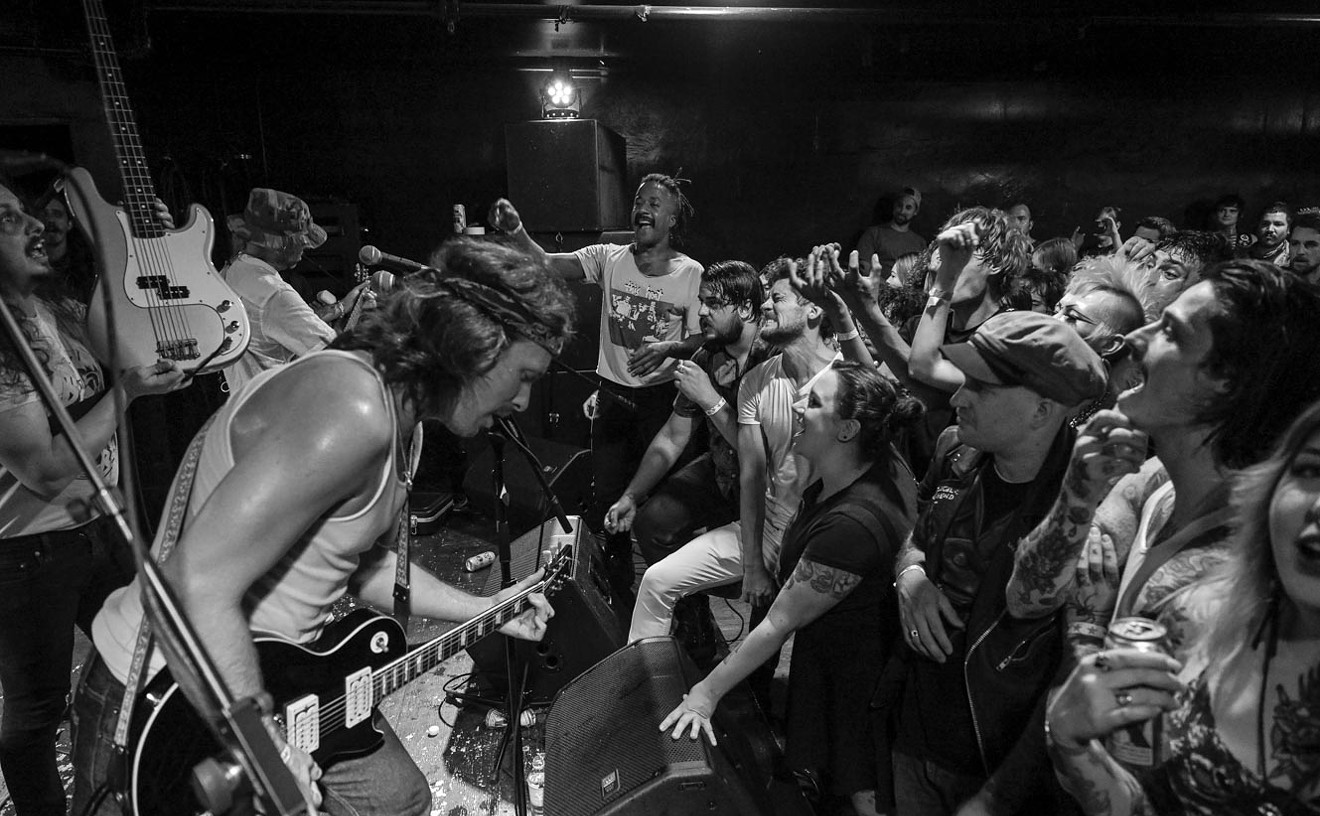Witch House started as a kind of joke between Travis Egedy of Pictureplane and his house music-producing friend Shams in 2009. It was a reference to the darker electronic music that they and artists like Salem and Crystal Castles were making. Though, truly, the music wasn't necessarily dark and was as bright and as high energy at times as any upbeat pop band. But the core aesthetic and half-serious references to occult imagery and ideas as signifiers, in a way, of the type of underground electronic pop music heavily influenced by noise and hip-hop seemed to capture various corners of popular imagination. While it became something of a cudgel by critics of the microgenre a good deal of interesting and innovative music came out of that loose and then small movement.
What isn't as well known, perhaps, is that the Denver band Modern Witch, surely falling under the umbrella of Witch House, perhaps sparked the name, along with the other aesthetic aspects of that style of music. Started by art students Mario Zoots and Kristy Fenton with various other collaborators across a few years, including Zoots' later bandmate in Men In Burka, Kamran Khan, Modern Witch played its first show at Rhinoceropolis on September 12, 2008. Egedy was living at the legendary DIY venue at the time and had already had some fruitful creative cross-pollination with bands from across the country, specifically HEALTH from Los Angeles and Future Islands from Baltimore. Traveling about, Egedy also came into contact with some of the main figures in what would be called the “Chillwave” scene and brought Washed Out to Rhinoceropolis for Ernest Greene's first Denver show on April 2, 2010. Greene's full band couldn't make it so he had to rely on his available gear and still managed to put in a solid performance.
Witch House and Chillwave were not the same, but there seemed to be a commonality of spirit and aesthetic with heavy borrowing from not just hip-hop but noise, house music, '80s synth pop and atmospheric post-punk. They were short-lived cousin genres that informed and influenced each other in terms of at least ideas and methods of production. fWitch House continues in the acts that are still around like Salem, Balam Acab and Mater Suspiria Vision but the term has gone out of vogue just as Grunge did by the middle of the '90s even though some people still used it to describe later mimickers of a once raw and vital musical force.
Chillwave, however, passed into history as a term, but many of the bands that were associated with that genre grew in interesting and more commercially successful directions as the artists matured in methods and songwriting. Toro Y Moi went from playing a small club like the Larimer Lounge to the Ogden Theater. Washed Out went from Rhinoceropolis to The Fox Theatre in Boulder. But the humble roots of these artists and their friendships going back to the days of playing small clubs and warehouses remains. Here is a glimpse of those bands from the small window of time in which the DIY and noise world merged with the world of pop. It may happen again.
*Author's Note on the High Plains Underground Archive: In the late 1990s, I started going to local shows on a regular basis. Growing up in the '70s and '80s, I didn't know there was such a thing as local music worth checking out. But I was drawn in after seeing a band called Rainbow Sugar (an all-female punk/hip-hop/experimental guitar rock extravaganza) opening for Sleater-Kinney's first show in Colorado at The Fox Theatre in October 1998. Next, I learned about a show at the now-defunct Rebis Galleries. From there I went to the first Monkey Mania show, and there was no looking back. Rainbow Sugar was the first local band I photographed at Herman's Hideaway in 1999. But it was in 2005 when I got my first digital camera that my extensive photo archive started. In this series, called High Plains Underground Archive, I will share a small fraction of the tens of thousands of those photos, focusing on specific venues, bands, time periods, movements and whatever else seems to make sense. The title of this series comes from the working title of my book on the history of underground music in Denver 1975 to the present.
Follow @Westword_Music
If you'd like to contact me, Tom Murphy, on Twitter, my handle is @simianthinker.
[
{
"name": "Air - MediumRectangle - Inline Content - Mobile Display Size",
"component": "12017618",
"insertPoint": "2",
"requiredCountToDisplay": "2"
},{
"name": "Editor Picks",
"component": "17242653",
"insertPoint": "4",
"requiredCountToDisplay": "1"
},{
"name": "Inline Links",
"component": "18838239",
"insertPoint": "8th",
"startingPoint": 8,
"requiredCountToDisplay": "7",
"maxInsertions": 25
},{
"name": "Air - MediumRectangle - Combo - Inline Content",
"component": "17261320",
"insertPoint": "8th",
"startingPoint": 8,
"requiredCountToDisplay": "7",
"maxInsertions": 25
},{
"name": "Inline Links",
"component": "18838239",
"insertPoint": "8th",
"startingPoint": 12,
"requiredCountToDisplay": "11",
"maxInsertions": 25
},{
"name": "Air - Leaderboard Tower - Combo - Inline Content",
"component": "17261321",
"insertPoint": "8th",
"startingPoint": 12,
"requiredCountToDisplay": "11",
"maxInsertions": 25
}
]











